Vegan Globetrotter is supported by our audience. When you purchase through one of our links, we may earn a small affiliate commission. As an Amazon Associate I earn from qualifying purchases. Your cost is not affected.
==================
Are you ready to elevate your culinary game? Today, we’re diving into the nitty-gritty of sharpening kitchen knives. It’s not just about getting that razor-sharp edge – it’s a kitchen skill that can truly level up your cooking experience. Join me as we explore the essential tips and techniques to ensure your kitchen knives are always ready for action. Let’s sharpen those skills and slice through the kitchen like a pro!
Why Your Knife is Losing Its Edge: Understanding Dullness
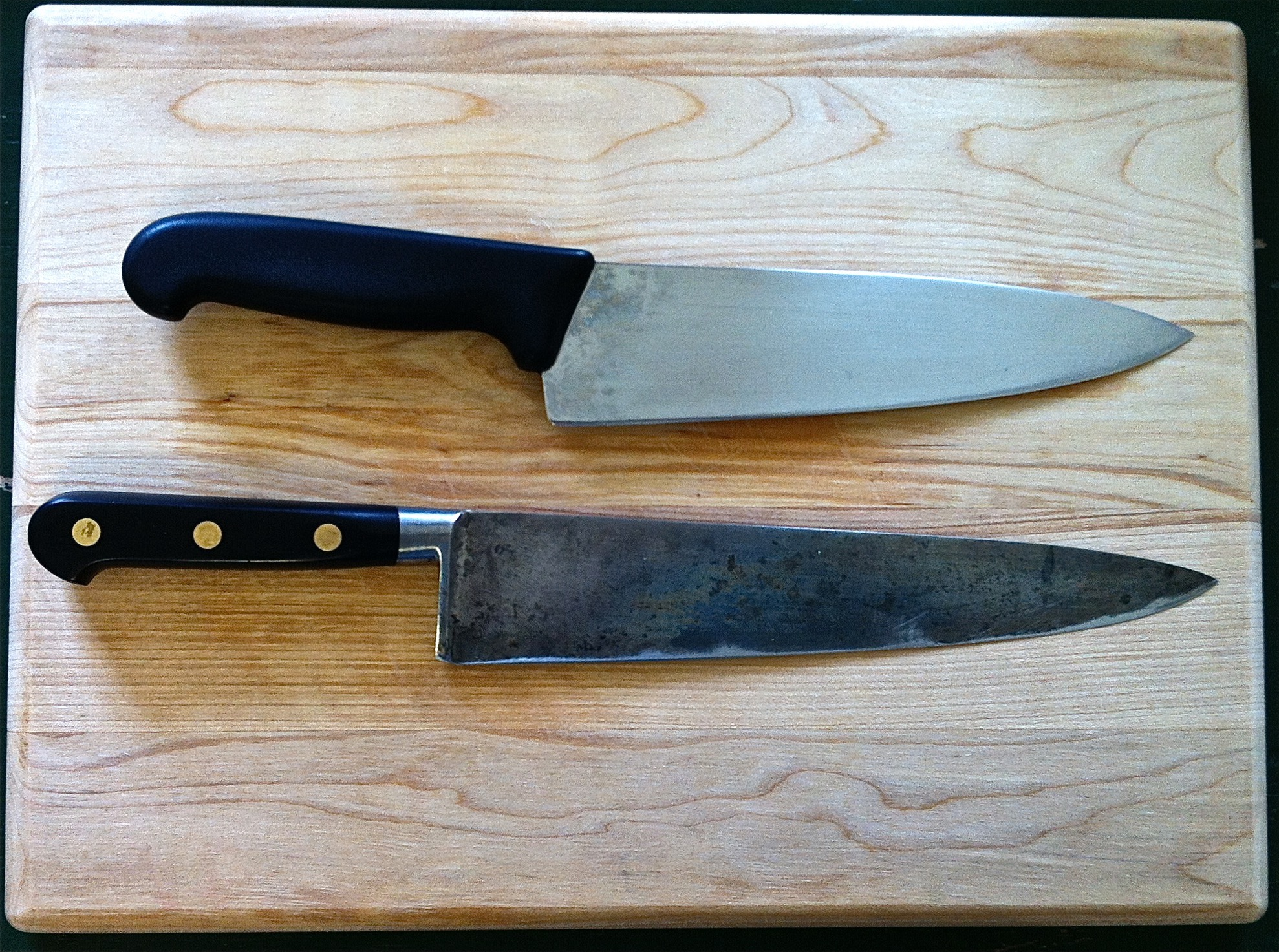
Photo by: The Art of Eating Magazine
Have you ever wondered why your trusty knife blade seems to be losing its mojo? Well, here’s the lowdown:
Microscopic Blade Tearing
Picture this – every time you slice through that juicy steak or crunchy veggies, your blade’s edge is doing a little tearing dance with the food cells. Over time, this tearing action can make the edge roll over, leaving you with a dull knife blade.
Battle With Hard Surfaces
Your knife blade might be tough, but it’s not invincible. If you’re chopping away on surfaces like glass, stone, or metal, it’s like sending your blade into a war zone. These surfaces are hard hitters and can quickly wear down your knife’s edge, making it lose its sharpness.
Storage Slip-Ups
Your knives need a comfy home, too. Tossing them carelessly into a drawer or letting them jostle with other utensils in a block might seem harmless, but it’s a recipe for dullness. All that rubbing and bumping can wear down the blade’s edge, leaving you with less-than-stellar cutting power.
Why Keeping Your Knives Sharp Matters?
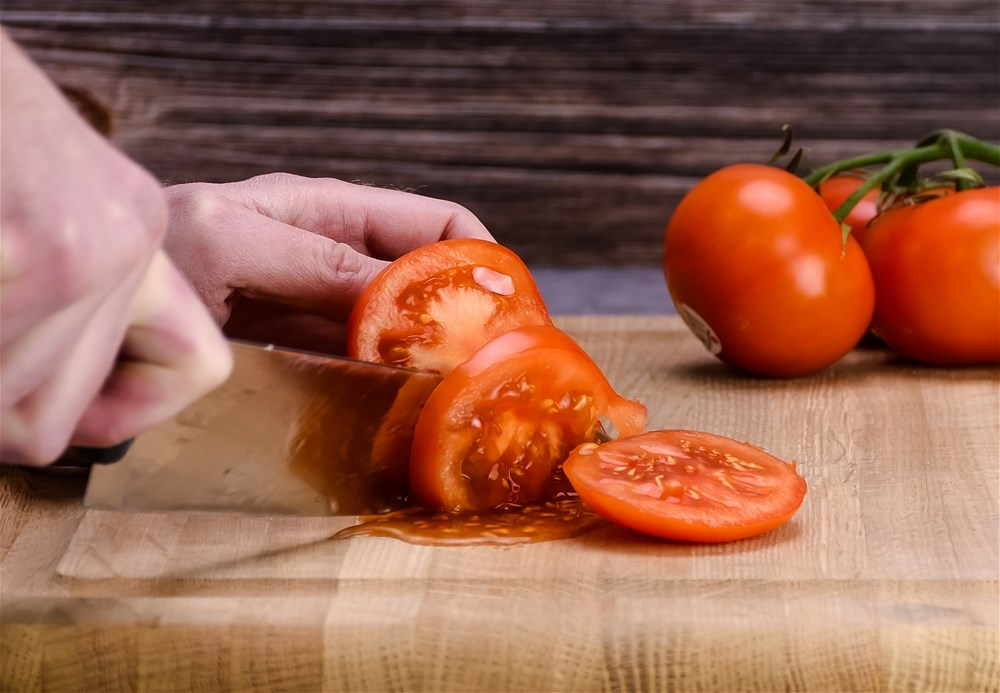
Photo by: Sharpening Supplies
Let’s talk about why it’s super important to keep those kitchen knives of yours razor-sharp:
- Safety First: Imagine this – a sharp knife effortlessly glides through your veggies or meat, reducing the chances of it rogue and causing a kitchen disaster. On the other hand, dull knives demand more muscle, upping the accident. That’s why regular sharpening kitchen knives is like giving your blades a safety boost.
- Precision and Speedy Chef Vibes: A sharp knife means clean, precise cuts that make your dishes look professional and save time and energy. No more wrestling with your ingredients – it’s like the knife does a little happy dance through your veggies. Regularly sharpening knives keeps that slicing joy alive and your edge longer.
- Bye-Bye, Food Waste: Sharp knives are like the precision surgeons of the kitchen. They make clean cuts, minimizing waste and ensuring you get the most out of your ingredients. No more feeling guilty about tossing out those oddly hacked-up bits. It’s all about making your food and your money go further.
- Knife Longevity: Treat your knives right; they’ll stick around longer. Regular sharpening and maintenance add years to their lifespan, which means more money in your pocket in the long run. Say goodbye to constantly replacing knives, and hello to a reliable kitchen companion.
- Cooking Bliss: Picture this – effortlessly slicing, dicing, and chopping with a sharp knife. It’s not just about convenience; it transforms cooking into a zen-like experience. The joy of easy, precise cuts takes your culinary game to a new level. So, whether you’re a home cook or a pro chef, make sharpening knives a regular part of your kitchen routine and watch your cooking bliss skyrocket!
Edge Essentials: Unveiling the Distinction Between Honing and Sharpening Your Blades
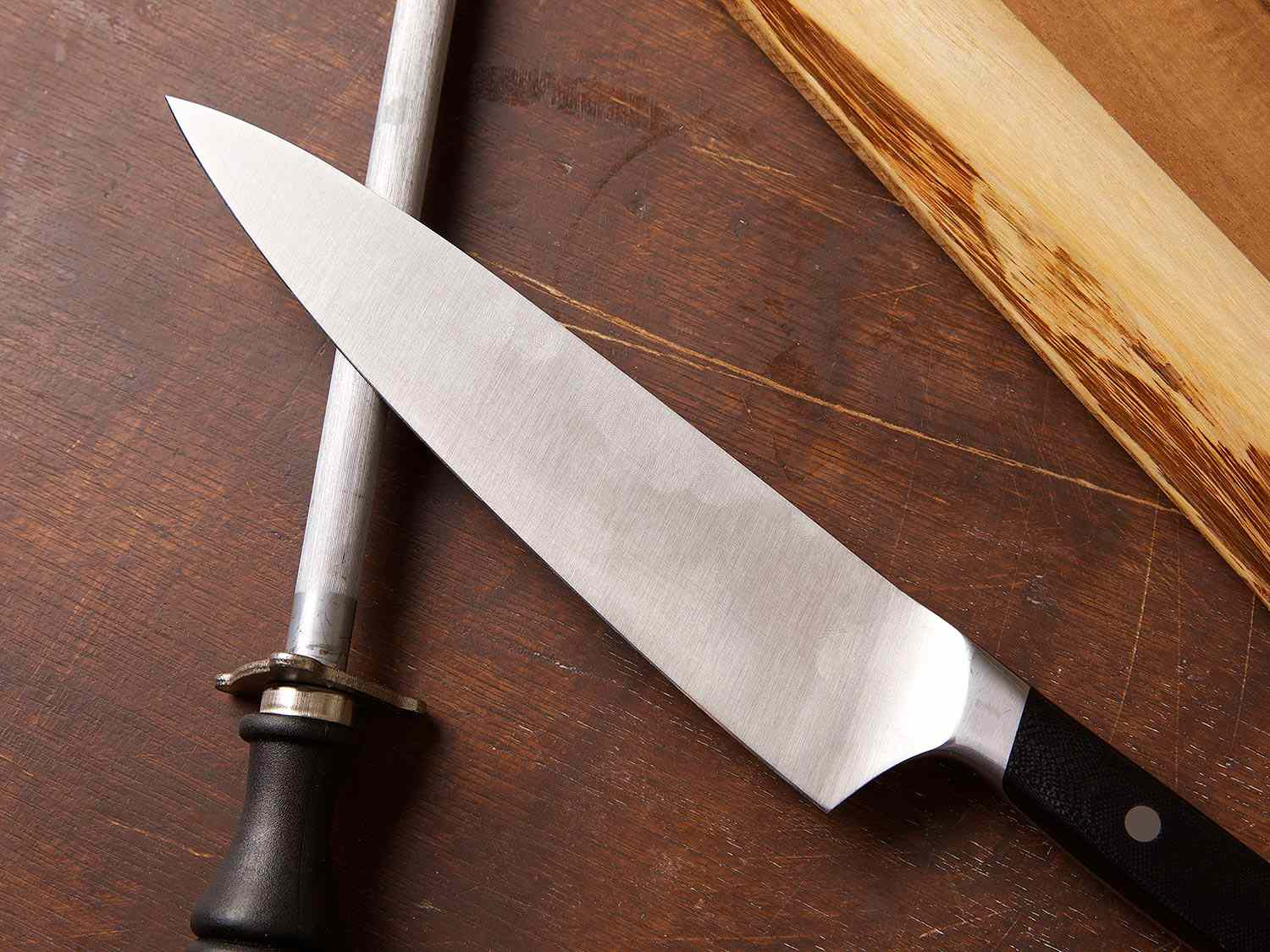
Photo by: Serious Eats
Let’s talk about keeping your kitchen knives in tip-top shape with the magic of sharpening and honing. They might sound a bit similar, but trust me, they’ve got their own moves, and you shouldn’t mix them up.
When you’re sharpening kitchen knives, it’s like giving them a little makeover. You’re using tools like whetstones, which have this abrasive material that gently removes some metal from the blade. It’s like crafting a fresh, razor-sharp edge, preparing your knife to conquer any cutting challenge.
Now, honing is more like a tune-up for your blades. It’s about keeping that blade aligned, not removing any material but straightening the existing edge. So, when we talk about honing, think about using tools like a honing steel – it’s the maestro of the tune-up. It glides along the blade, aligning and refining without removing any metal.
So, remember, when you want to give your kitchen knives a sharp makeover, go for sharpening with those abrasive tools. And when your blades need a little tune-up to stay in perfect harmony, the honing steel takes center stage.
Unveiling the Best Techniques to Sharpen Kitchen Knives
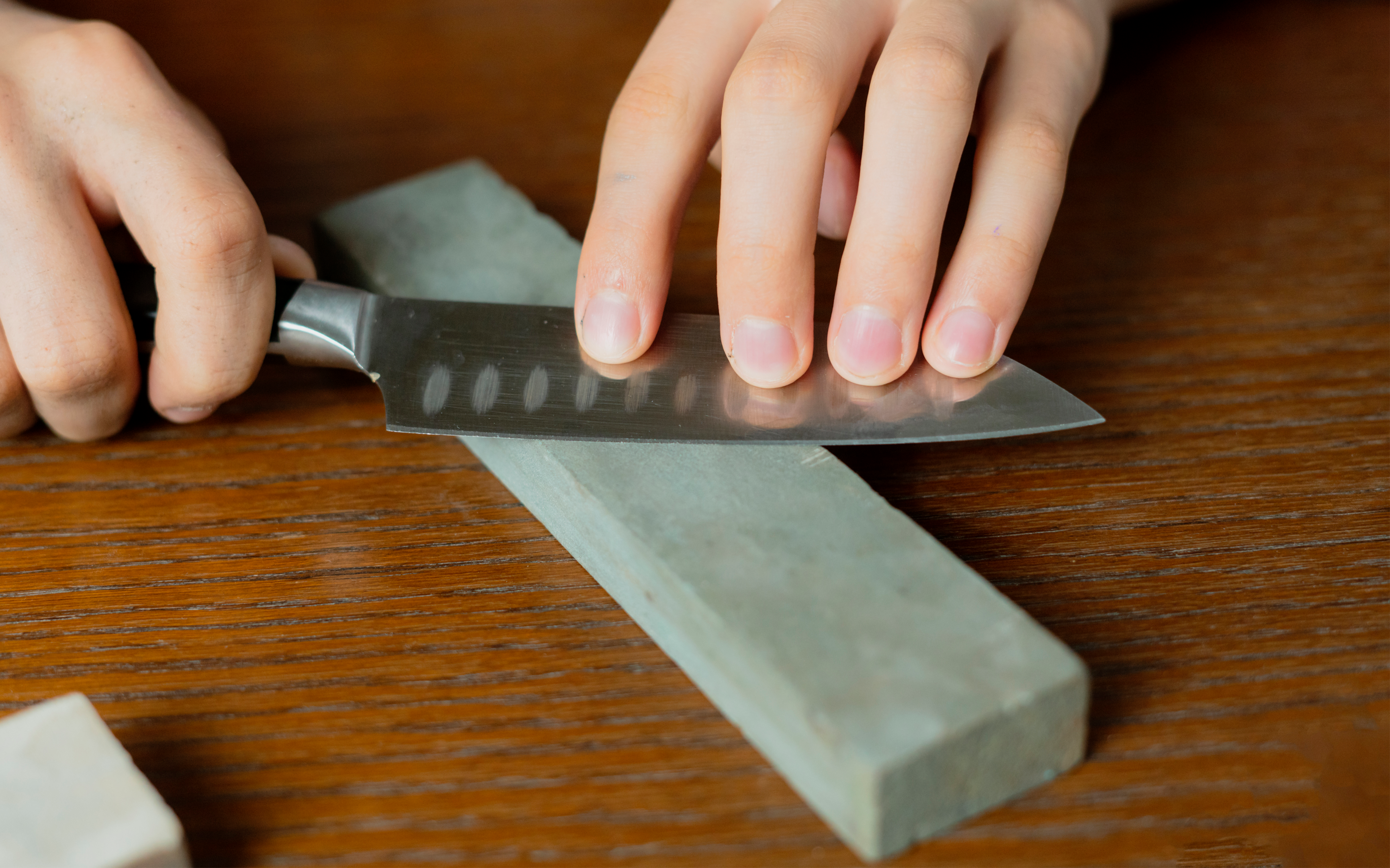
Photo by: Hunker
Maintaining the sharpness of your kitchen knives is crucial for both safety and achieving top-notch cooking results. When knives are dull, you need more force to cut, which raises the chances of accidents and gives you uneven, torn-up slices. On the flip side, with sharp knives, you can smoothly glide through your ingredients, adding a lot of precision and improving how your dishes look. So, let’s dive into the best ways to sharpen those kitchen knives:
Knife Sharpening With a Whetstone

Photo by: KA Cook – Medium
So, when it comes to keeping your kitchen knives on point, whetstones (or sharpening stones) are your go-to. These flat blocks, made from various abrasive materials like aluminum oxide, ceramics, and even diamond-coated steel sheets, are the real heroes for sharpening kitchen knives. Whether working on a knife’s blade or experimenting with different sharpening methods, these stones have your back.
Now, here’s the deal – these sharpening stones, are like the magic wands for your blades. They require a good soak before you get down to business, and it’s key to keep them wet while you’re sharpening away. Why choose a whetstone over other sharpening methods? Whetstone sharpeners provide enhanced control over the sharpening process for your knife. So, picture this: you’ve got a multi-grit whetstone in hand and a honing rod or a slick piece of leather for that extra finesse in burring and polishing the edge. It’s one of the best ways to sharpen knives, offering flexibility in angles and compatibility with different types of steel. But, of course, it takes practice, patience, and a sprinkle of confidence to master the art of whetstone sharpening. It’s a journey, but hey, the results are cutting-edge!
Guide on Sharpening a Knife with a Whetstone
- Soak the Whetstone: Submerge the sharpening stone in water until no air bubbles are visible. This might take 10 to 45 minutes, depending on the stone.
- Set Up the Whetstone: Position the whetstone horizontally, with the coarse side facing up. Place it on a damp towel to prevent sliding.
- Sharpening Process: Lay the upper portion of the blade’s sharp edge against the left end of the sharpening stone. Tilt the blade at a 20-degree angle, ensuring the sharp edge is in contact with the stone. Slide the sharp edge to the right across the stone, applying pressure with your free hand. Simultaneously, move the knife toward the top edge of the stone so that the lower edge contacts the stone by the right end.
- Repeat for the Other Side: Start at the stone’s right end to work on the blade’s other side. Tilt the blade in the opposite direction. Repeat the sharpening process about ten times on each side.
And there you have it – the best way to sharpen your knives using a sharpening stone!
Sharpen Kitchen Knives: Electric Knife Sharpener
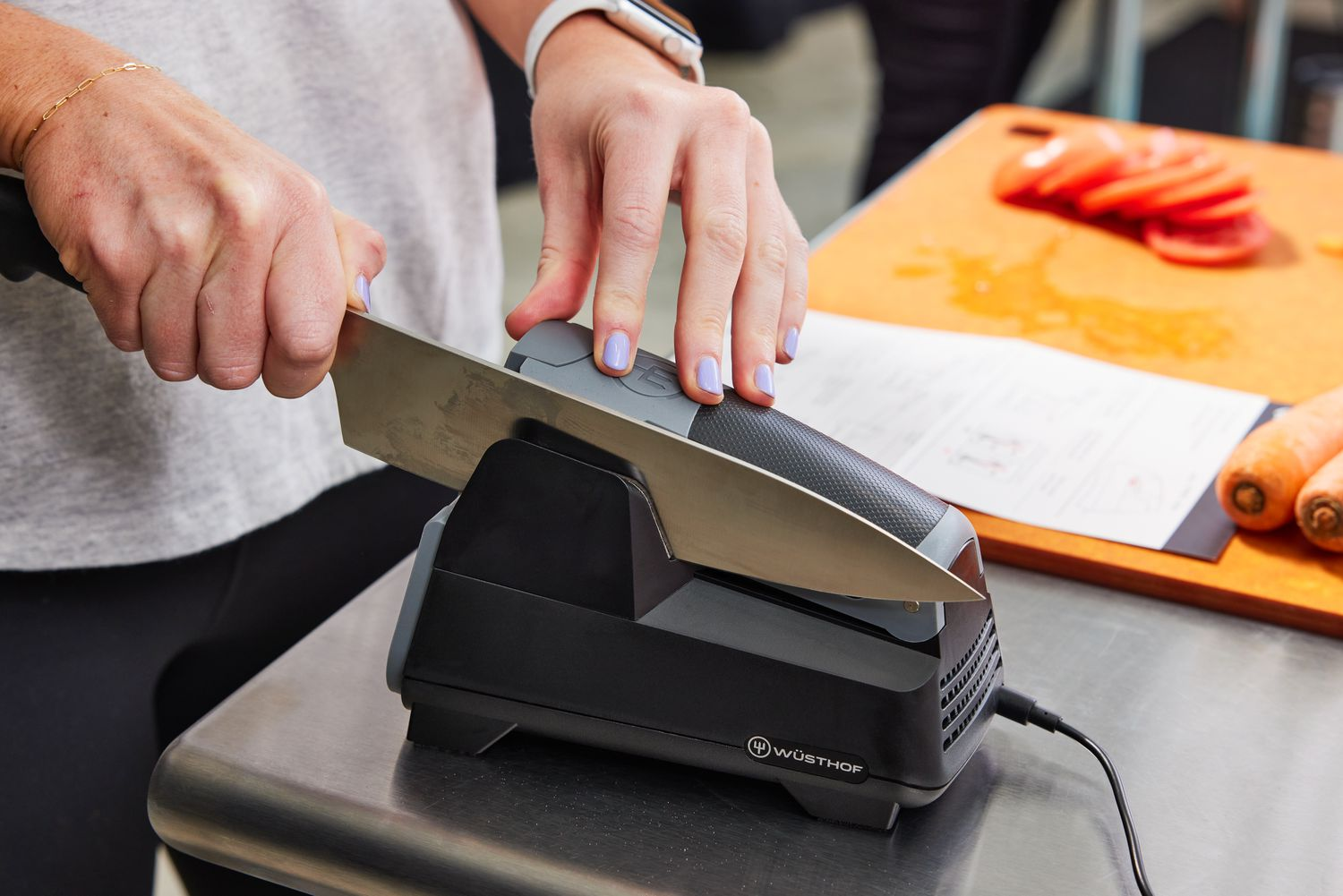
Photo by: Food & Wine
You’ve got a whetstone, and it’s like a hands-on spa day for your knife, right? Enter the electric knife sharpener, and it’s like giving your blade a power-packed makeover. Instead of the manual grind, it goes for the powered abrasive wheels or discs.
Now, here’s the scoop on electric sharpeners. They’re like the superheroes of convenience and user-friendliness. Pop your knife in, and voila! A good, sharp edge is in the house. But there’s always a but; they can be heavy-handed with your knife’s edge over time. Yep, they might wear it down quicker than your trusty whetstone would.
Electric sharpeners are like the fast food of knife sharpening—quick and easy, but with a few trade-offs. It’s all about finding the right balance for your kitchen superhero needs!
Utilizing an Electric Knife Sharpener: A Step-by-Step Guide
- Gather Your Gear: Electric knife sharpener, Clean and dry knife, Damp cloth, or paper towel for a post-sharpen wipe-down.
- Setup: Place the electric sharpener on a stable, flat surface to keep it steady during use.
- Check Knife Type and Stages: Consult the sharpener’s manual to identify the right stage for your knife type (serrated or straight-edge).
- Power Up: Plug in the electric sharpener and turn it on according to the manufacturer’s instructions.
- Insert Knife: Hold the knife firmly and insert the blade into the designated sharpening slots, following the angle guides provided.
- Sharpening Process: Pull the knife through the desired sharpness stage with gentle and consistent pressure. Avoid excessive force to prevent blade damage.
- Repeat for the Other Side: Flip the knife and repeat the sharpening process on the other side of the blade.
There you have it—quick and easy steps to keep those knives on point using electric knife sharpeners and their nifty sharpening slots!
Knowing How Often to Sharpen Your Blades and How to Tell If Your Knives Are Getting Dull
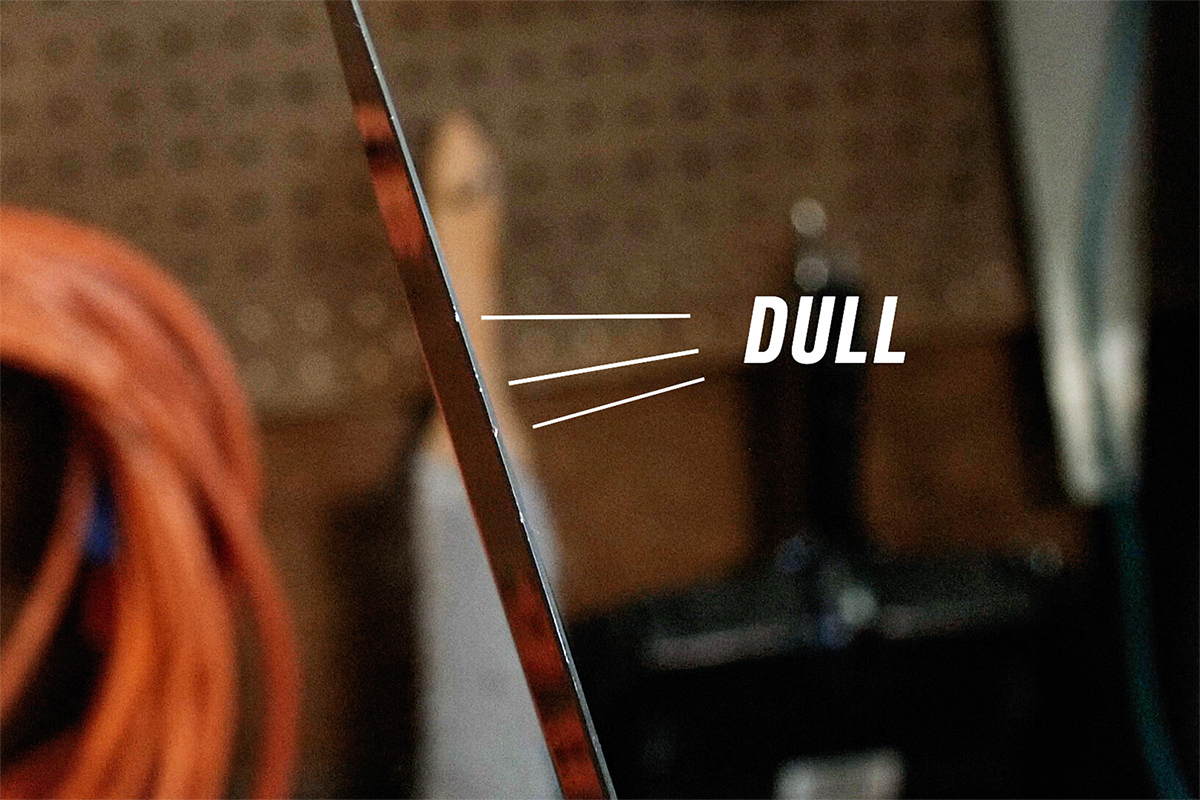
Photo by: Work sharp
Alright, let’s talk about keeping those knife blades in tip-top shape. Now, how often you sharpen them is a bit like a dance with your kitchen routine. If you’re giving them a workout regularly, you should sharpen every 1-2 months. But, if your knife blades are practically your kitchen sidekicks and you’re tackling tough foods, you might find yourself hitting the sharpening stage more often.
Now, how do you know it’s time for a sharpening intervention? Well, here are some telltale signs:
They’re Putting Up a Fight
If your knife blades are acting like they’ve hit the gym and need more muscle to cut through food, it’s a sign.
Tearing and Shredding Drama
Instead of those clean, precise slices, if you’re getting a bit of a shredded salad situation, your knife blades might say, “Hey, give us a sharpening break!”
Uneven Cut Party
If your veggies look like they’ve been through a culinary obstacle course with uneven cuts, it’s a sign that the blade damage wants some attention.
Rough and Jagged Edges
Run your fingers along the blade (Be careful) – if it feels like a backcountry road instead of a smooth highway, it’s time to start sharpening. Now, when you notice these signs, here’s where the action starts. Whether it’s a whetstone, honing rod, or the electric magic of a sharpener, it’s time to bring out the sharpening tools.
Here’s an additional short video on how to tell If Your Knives Are Getting Dull
How to tell if your knife is dull By: Work Sharp Tools
Keeping the Edge: Essential Tips to Prevent Your Knives from Dulling
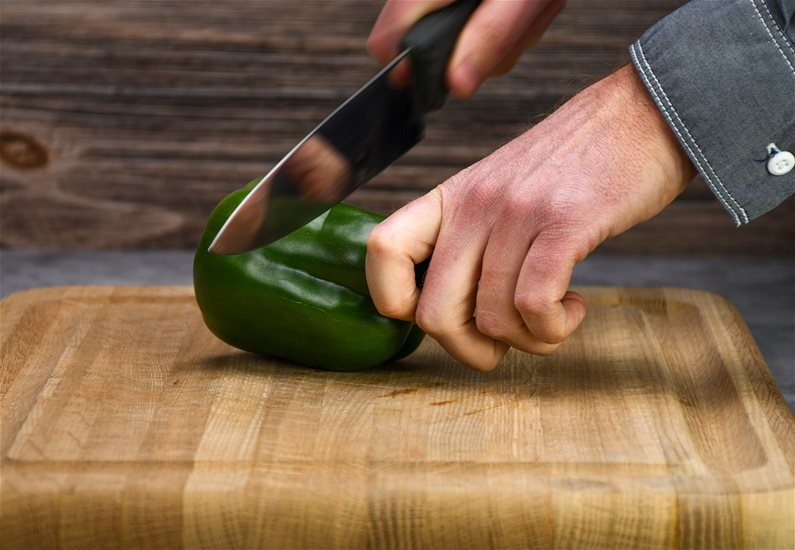
Photo by: Sharpening Supplies
Let’s talk about keeping those knives and your budget in top-notch condition. Here are some down-to-earth tips to keep them from losing their edge:
Cutting Board Harmony
Always give your knives a soft landing – use a cutting board made of wood, plastic, or something gentle. It’s like a comfy bed for your blade, protecting it from unnecessary wear and tear. Plus, it’s the secret to maintaining that brand new edge and saving your hard-earned cash from buying a replacement.
Storage Matters
Show your knives the VIP treatment by keeping them stored in a knife block, on a magnetic strip, or in individual sheaths. This VIP treatment prevents them from bumping into each other or having awkward encounters with other utensils, ensuring your expensive knife stays pristine.
Regular Sharp Talks
A dull knife is like a grumpy friend – it can be dangerous. Have regular heart-to-hearts with your knives using a whetstone, sharpening steel, or the electric magic of a knife sharpener. Your knives will thank you with precision and reliability, maintaining that knife sharp excellence.
Stay in Your Lane
Each knife has its mission. Don’t let them go rogue on you by prying open cans, chopping wood, or scraping off surfaces. That’s a fast track to a prematurely dull blade and a potential dent in your wallet if it’s an expensive knife.
Following these kitchen commandments, you’ll keep your knives sharp, your bank account happy, and ready for any culinary adventure.
Elevating Your Culinary Craft with Masterful Knife Care
There you have it, fellow kitchen enthusiasts! Sharpening your kitchen knives is not just about maintaining a sharp edge; it’s a culinary skill that can elevate your cooking experience. Understanding why knives lose their edge, the importance of keeping them sharp, and the distinction between honing and sharpening sets the stage for kitchen mastery.
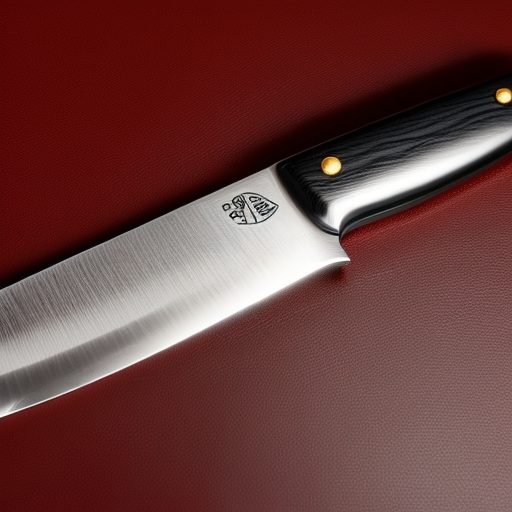
Whether you opt for a whetstone’s precision or an electric sharpener’s convenience, the key lies in regular maintenance. Honing that secret handshake for knives adds a spa-like touch to keep your blades in top form between sharpening sessions.
So, why does it all matter? Safety, precision, less waste, increased knife longevity, and the sheer joy of effortless slicing contribute to a cooking bliss that’s hard to match. Regularly sharpening your knives becomes a kitchen ritual that transforms your culinary game. And don’t forget the practical tips – from using the right cutting board to storing your knives wisely. These simple practices preserve your knives and your budget, ensuring a reliable kitchen companion for years to come.
Now, armed with essential tips and techniques, it’s time to sharpen those skills and slice through your kitchen adventures like a seasoned pro. Happy cooking and even happier slicing!
FAQs
Are There Risks Associated With DIY Knife Sharpening?
DIY sharpening can lead to blade damage or injury. Practice carefully, follow guidelines, and consider professional services for valuable or delicate knives.
Can I Sharpen My Knives Too Much?
While regular maintenance is essential, excessive sharpening can lead to faster blade wear. Follow the manufacturer’s guidelines for sharpening frequency and avoid unnecessary sharpening sessions.
📌 Find Us on Social Media
🔹 Facebook: VeganGlobetrotter Join us on our Facebook page, VeganGlobetrotter, where we share mouthwatering plant-based recipes and tips to inspire your vegan lifestyle.
🔹 Instagram: _veganglobetrotter Follow us on Instagram at _veganglobetrotter to embark on a visual journey of delectable vegan dishes.
🔹 Pinterest: theveganglobetrotter Dive into the world of plant-based goodness and wellness with our Pinterest account, theveganglobetrotter.
🔹 Twitter: VeganGlobetrot Stay up-to-date with the latest vegan trends, insightful articles, and exciting updates by following us on Twitter at VeganGlobetrot.
🌍 Let’s embark on a vegan journey and a celebration of the vibrant world of vegan living! 🌱🌏



Don't miss out
when new recipes and information are added!
Join our newsletter for free recipes,
healthy living inspiration, and special offers
You have Successfully Subscribed!